I have a weird disconnect where I drink gin fairly often (mostly in martinis and gin and tonics; I also like it in a bloody mary, aka a bloody margaret) but generally don’t really pay much attention to actual brands. This is admittedly pretty weird, considering the amount of variation under the “gin” umbrella. I figured it was high time to start affording at least a little of the kind of attention I’ve been affording bourbon and scotch.
Gin is a classic distilled spirit — often unaged in the mainstream with plenty of aged versions out there. After the first distillation (which basically makes white dog), the spirit is distilled again with a “gin basket” attached to the still that’s full of barks, berries, florals, citruses, and almost always juniper berries. Unlike the rules on bourbon, which are pretty strict (stipulating grain ratios, barrel type, and country of origin amongst other factors), all a gin has to have in order to be called “gin” in the United States is 40% ABV and the flavor of juniper berries, with no real stipulations on what has to be in the mash or what botanicals or additives you can use, outside that juniper.
“London Dry gins” tend to be some of the most popular (Tanqueray, Bombay Sapphire, and Beefeater all make them), and refer to gins with no artificial flavors added (only those from the distilled botanicals) plus no added sweeteners. Those are traditionally juniper heavy, and many include citrus peels, while some other, newer varieties of gin have expanded to other botanicals and leaned towards different flavor profiles — Hendrick’s, for example, is a popular gin flavored with rose and cucumber.
One can get deep into the weeds of gin distinctions if one wants, but the point is there’s a lot of variety out there and it seems worth figuring out which style one prefers. The great thing about them is that even the fancier, craftier gins aren’t particularly expensive (especially relative to bourbon and scotch).
The Test:
The tough thing about tasting gin blind is that, like I said, I normally drink gin as a component of cocktails. But it’s hard to appreciate all of a gin’s particular qualities when it’s diluted with other things, and also, not only are there a lot of gin cocktails to account for, you’d have to account for all the different variations on those cocktails (the different vermouths for a martini, for example).
For this test, I opted to split the difference a little. I tasted all of these gins straight, BUT fresh from the freezer, because that’s generally where I store my gin (the better for making ice-cold martinis). I might miss some of the subtler qualities of the gin, but I figure why taste something warm if I’m never going to drink it that way?
Today’s Lineup:
For this blind, I tasted the handful of gins I already had on the bar against some samples of newer, craftier stuff I’ve tried before — to see if I could tell the difference, in either price or taste. They are:
- Tanqueray London dry gin
- Humboldt Distillery Hemp Seed Infused Vodka
- Glendalough Rose Gin
- Mulholland Gin
- The Botanist Islay Dry Gin
- Glendalough Wild Botanical Gin
- St. George Dry Rye Gin
- St. George Terroir Gin
- St. George Botanivore Gin
The Rankings
9. St. George Terroir Gin (Sample 8)
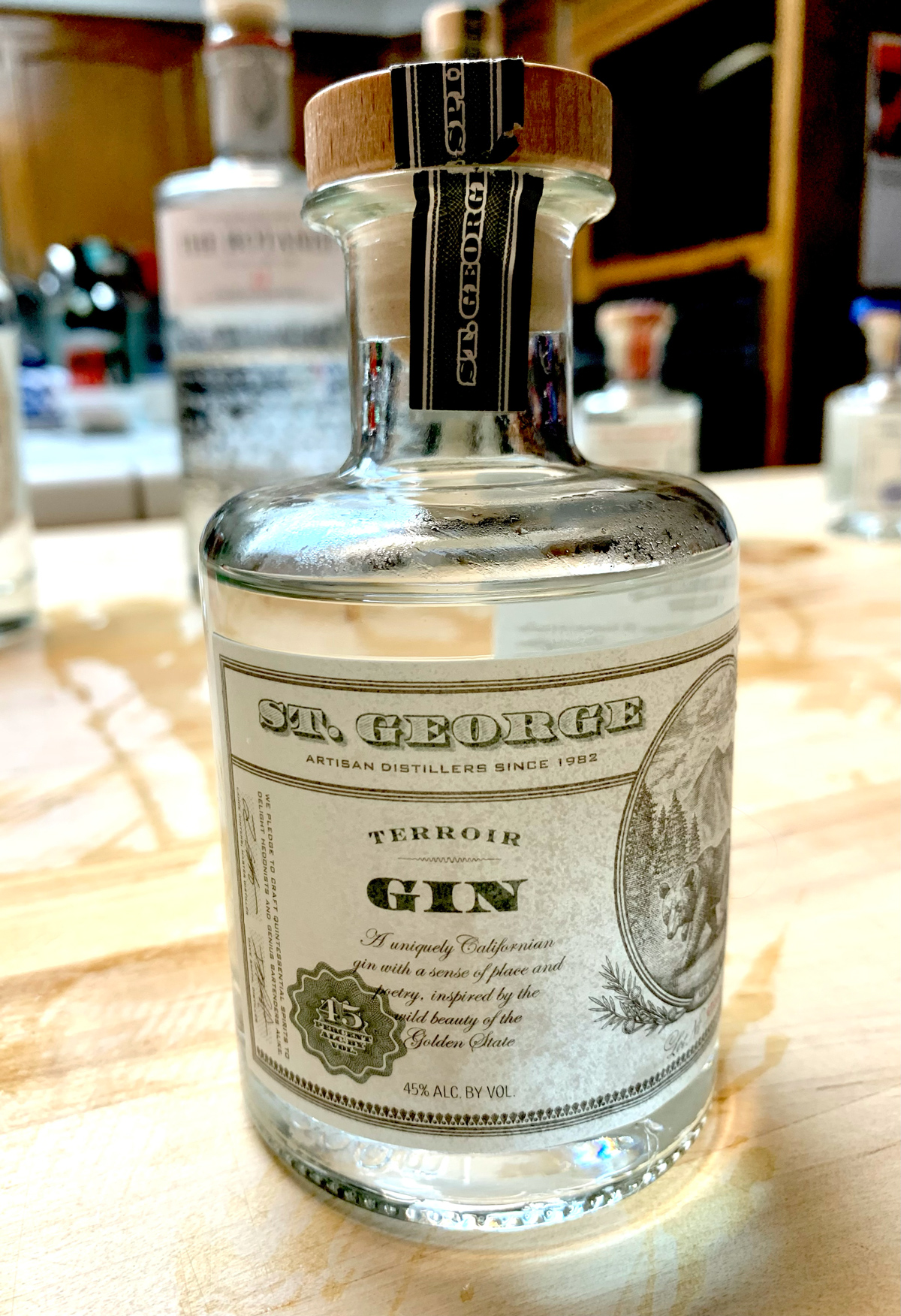
Price: $29.99 from Total Wine
The Gin:
St. George Spirits is a Bay Area craft distillery founded in 1982. The 45% ABV terroir was one of three St. George gins I received a sample of, and as they describe it: “Inspired by hiking the trails on California’s Mt. Tam, we created St. George Terroir Gin as an ode to the wild beauty of the Golden State. Made from a host of evocative botanicals, it’s an olfactory snapshot of the lush landscape surrounding the Bay Area.”
Original Notes:
This has a richer, buttery nose that I’m struggling to identify. Is that kettle corn? There’s something caramel-foward, sweet, maybe even with a hint of cinnamon about it. On the palate… Oh, this is very herbaceous and “grassy” — it’s overpowering. This absolutely has to be the hemp one.
Sadly I do not enjoy this flavor, it reminds me of swallowing the roach. If you want something that tastes like hemp, this will be great, but I feel like I’m drinking patchouli here.
Rating: 4/10
Bottom Line:
Probably I’m undermining my own authority but having my first entry be a gin that I totally misidentified the flavor of, but I swear if you tasted this one you would understand. This is a gin supposedly designed to express the terroir of Mt. Tam in Marin County (where I’ve spent a lot of time; I lived in San Francisco for almost 10 years). But it’s such an intense mix of pine, herb, and grass that, knowing one of these was hemp flavored, I assumed it was this one.
Anyway, this was just a LOT. I may try it in a G&T or a negroni to see if that pungency is an asset there, but as a stand-alone flavor, it was just too much for me.
8. St. George Dry Rye Gin (Sample 7)
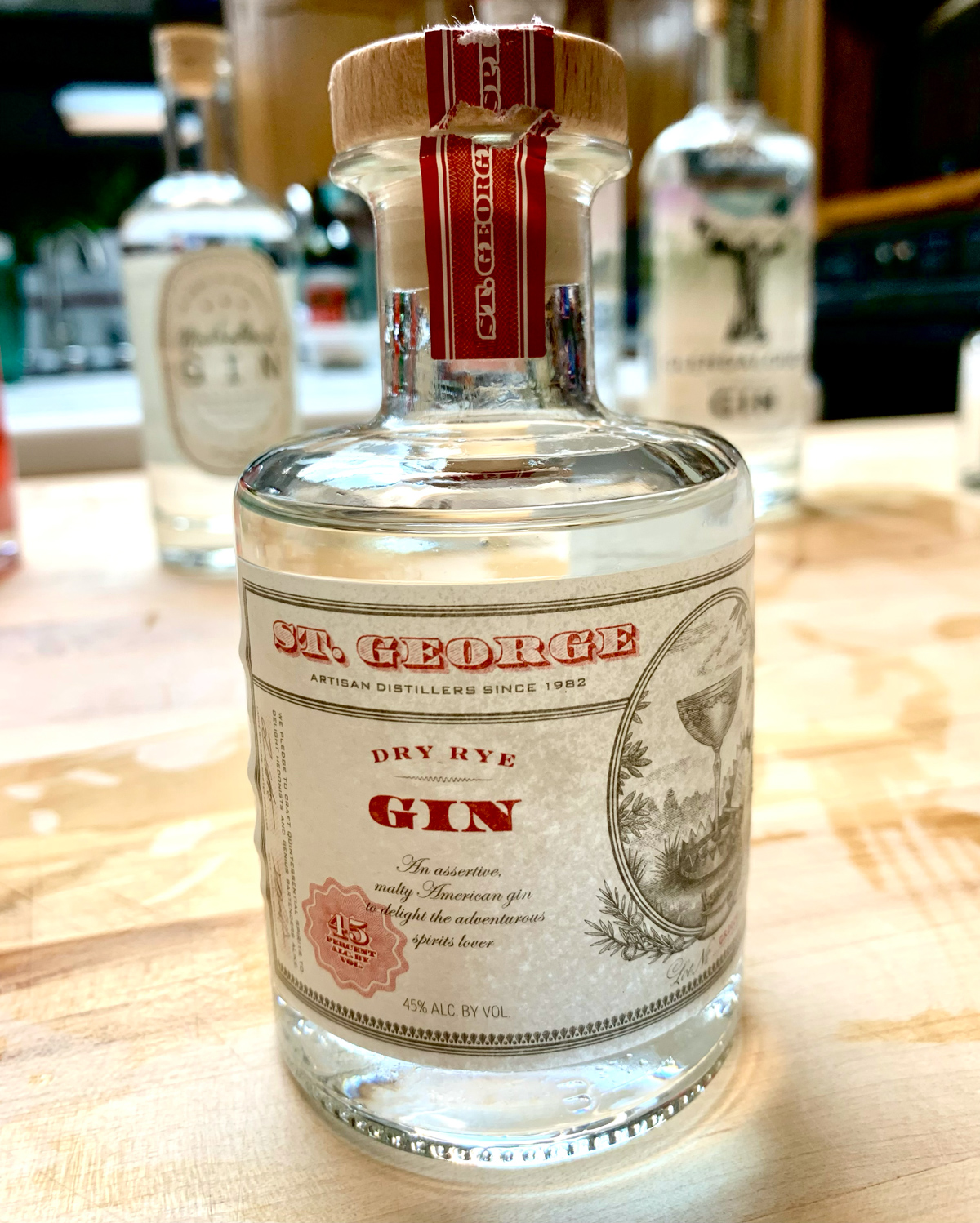
Price: $28.49 at Total Wine.
The Gin:
St. George’s 45% ABV Dry Rye gin is distilled from 100% malted rye and flavored with lots of juniper, caraway, and black pepper.
Original Notes:
This is another that smells like a vaguely butterscotchy, vaguely corn-neutral spirit. This just tastes like young liquor to me. It’s not off-putting by any means, it just doesn’t give me much.
Rating: 5/10
Bottom Line
Even though they came from the same distillery, I disliked this for basically the opposite reasons as the last one — this one felt too mild and neutral whereas the other was a chaotic flavor bomb.
This one wasn’t bad and it drank fine, it just wasn’t super memorable compared to the other gins.
7. Humboldt Distillery “Humboldt’s Finest” Hemp Seed-Infused Vodka
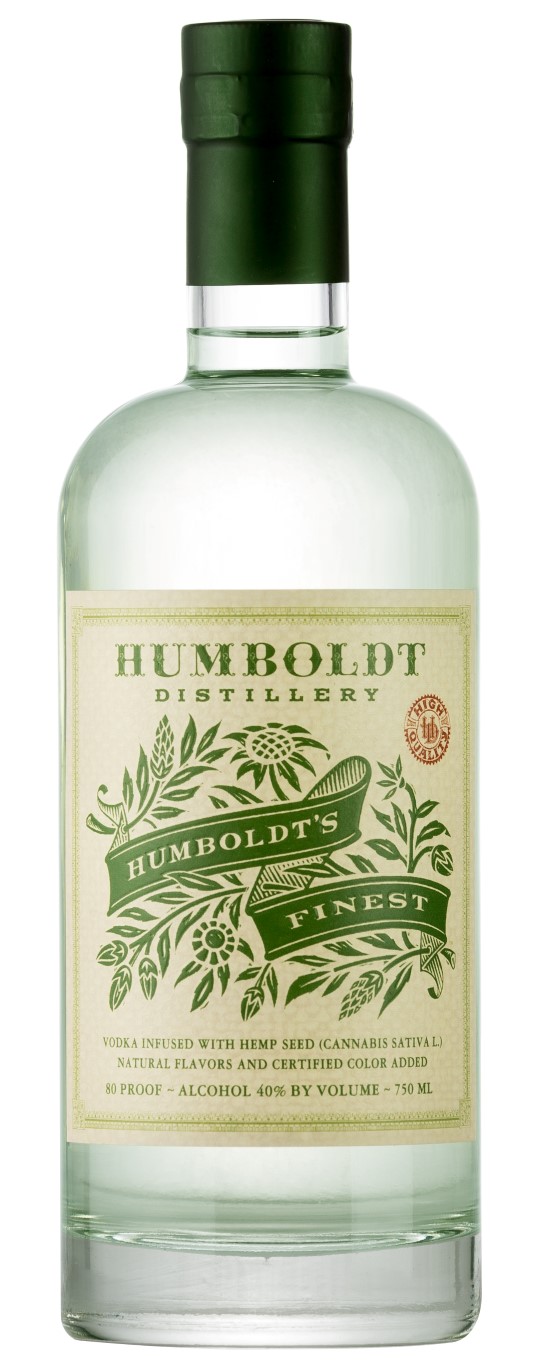
Price: $24.99
The Gin, er, Vodka:
Humboldt Distillery bills this one as “a vodka that drinks like a gin,” which is to say that, just like gin, this consists of a distilled spirit flavored with botanicals. But since none of those botanicals are juniper in this case, it can’t be called a “gin.” Anyway, this vodka grew out of customers constantly asking Humboldt Distillery founder Abe Stevens why he hadn’t married his sugarcane-based organic vodka with Humboldt’s most famous export — cannabis.
The customer is always right, so, voila, this hemp seed-infused vodka (which also has “notes of pine, cucumber, green tea, lemongrass, and basil.”) at 40% ABV.
Original Notes:
I’m searching for anything other than alcohol on the nose here. On the palate… this must be the vodka? This one tastes like corn alcohol, though not in an unpleasant way. There aren’t any unpleasant notes here, it just feels very neutral to me.
Rating: 6/10
Bottom Line:
It seems this vodka drank more like a vodka. That being said, I think it’s probably a credit to Humboldt Distillery that their hemp seed vodka wasn’t overpoweringly hemp-y. It could’ve been a little more poweringly something though, maybe it could’ve used a higher ABV. This felt like it would’ve done much better in a vodka competition, but against gin it just doesn’t seem as flavorful by comparison.
6. St. George Botanivore Gin
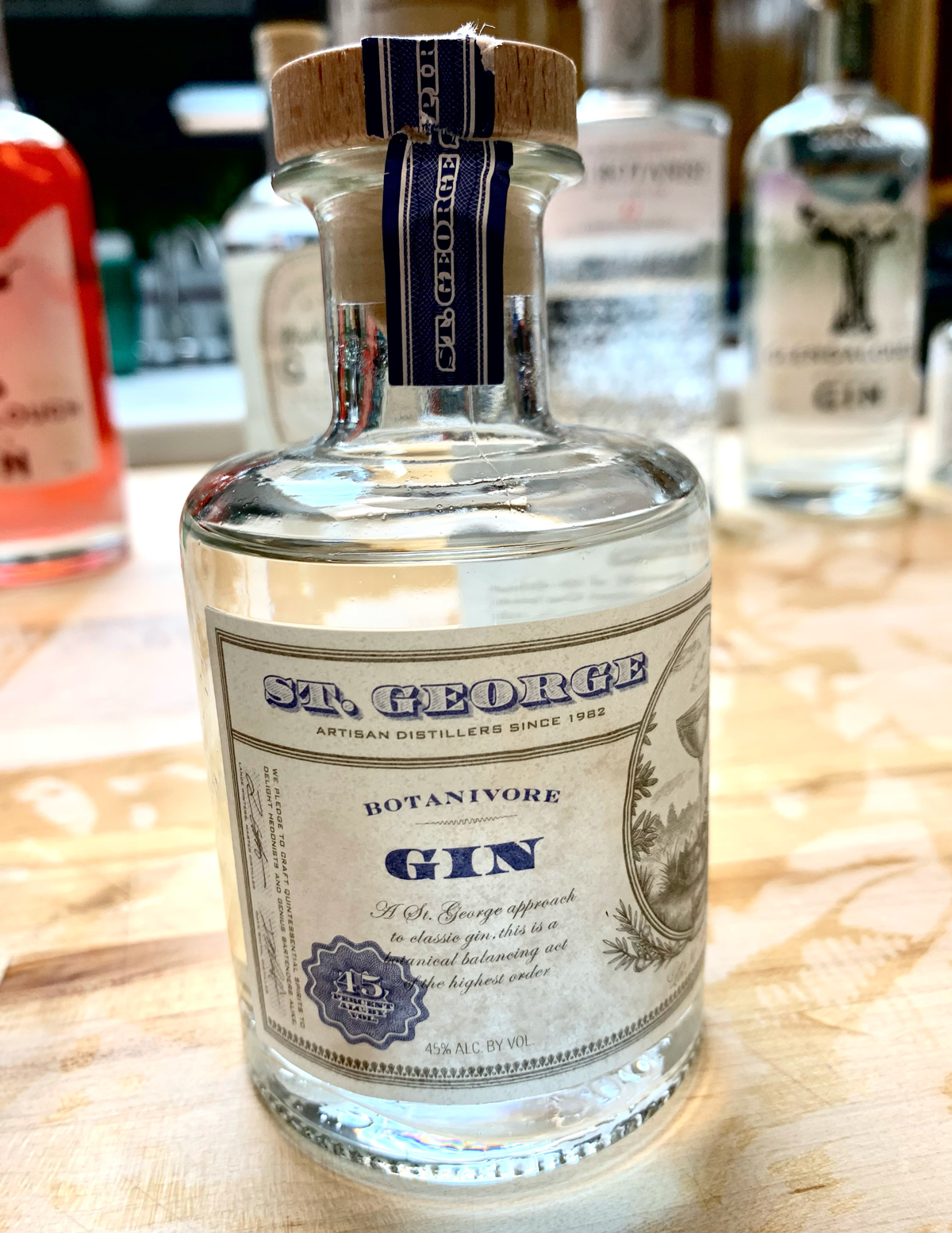
Price: $29.99
The Gin:
The “most traditional” of St. George’s gins, the 45% ABV Botanivore is infused with 19 botanicals, from anjelica to cilantro. Oh hell, I’ll just list them: angelica root, bay laurel, bergamot peel, black peppercorn, caraway, cardamom, cilantro, cinnamon, citra hops, coriander, dill seed, fennel seed, ginger, lemon peel, lime peel, orris root, Seville orange peel, star anise.
Original Notes:
This one is sweet and briny on the nose, with a subtle butterscotch. Sort of bright and sweet on the palate with a subtler pineyness. It’s… fine.
Rating: 6.5/10
Bottom Line:
Supposedly the Dry Rye had more juniper than this one, but you could’ve fooled me. This one tasted like a fairly traditional gin, to my palate, and again, there wasn’t anything off-putting about it. On another day I could see having this higher, but it just didn’t seem that memorable compared to some of the others.
Very drinkable though.
5. Tanqueray London Dry Gin (Sample 1)
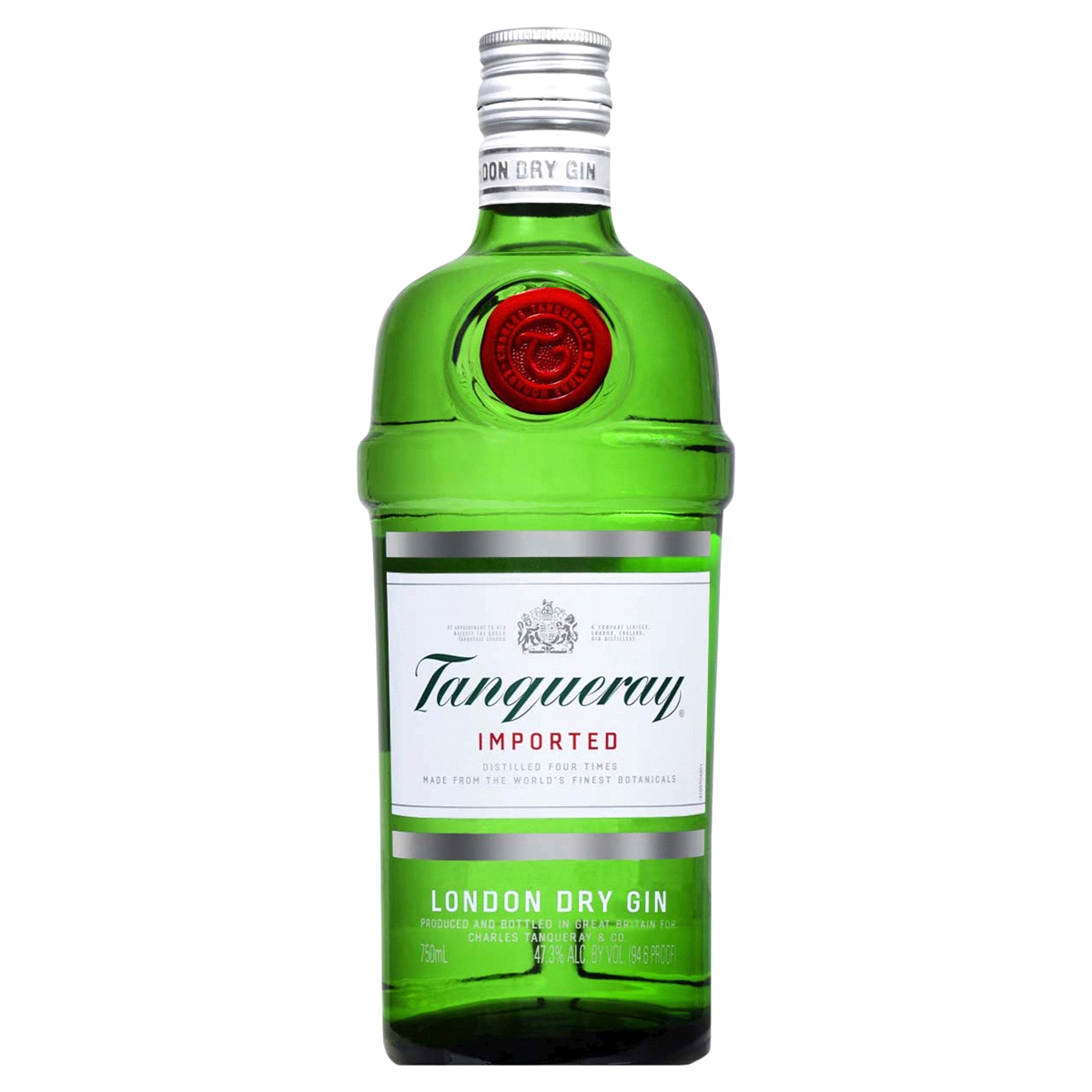
Price: $17.99
The Gin
It doesn’t get much more classic than this quadruple-distilled, London Dry Gin, created back in the 1830s by Charles Tanqueray. It comes in at a spicy 47.3% ABV, and is supposedly made from a wheat-based neutral spirit from the same source as Smirnoff.
Original Notes:
This smells exactly how I imagine gin smells. Clean, piney, lots of juniper. That’s about all I get on the nose, besides alcohol. On the palate, it comes on sweet and actually kind of briny. This reminds me of the sea. Surprisingly smooth, I thought this was going to make me shudder and it didn’t.
Rating: 7.5/10
Bottom Line:
I threw this in there as the baseline option, based on the fact that I happened to have one available, as many people do. It functioned exactly as I imagined, landing perfectly in the middle. I was more impressed with the taste than I imagined though — while it may lack the “flair” of some of the pricier and craftier stuff, it’s still solid and would make a fine martini, negroni, G&T, etc.
Gotta love that mod green bottle too. One thing I would note though, is whereas lots of “well” whiskey and bourbon labels come in at a fraction of the cost of the craftier stuff, with a lot of these gins the difference was only 10 or 12 bucks, so it’s not like this is a huge value decision.
4. Glendalough Rose Gin (Sample 3)
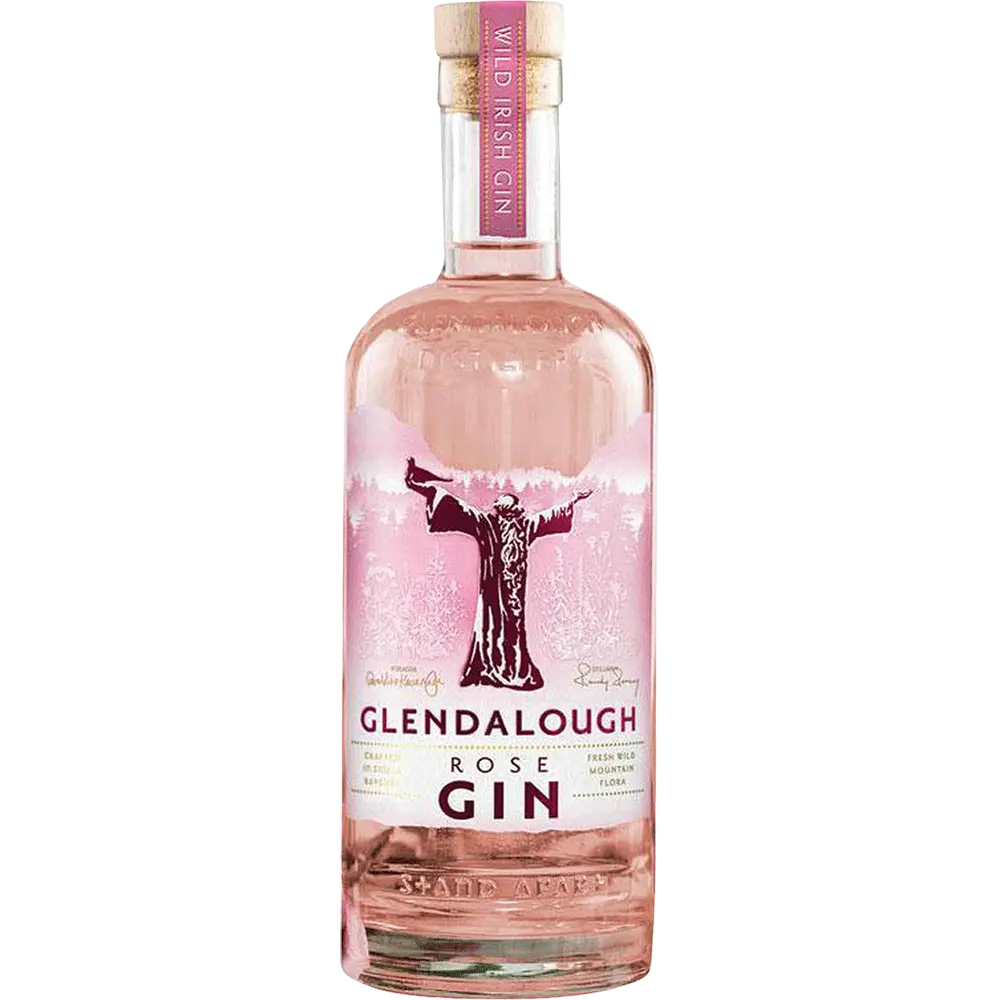
Price: $28.99
The Gin:
You may have noticed the lack of accent above the e in the name there, and that’s because this product of Glendalough, a sustainable distillery in Ireland, is made with roses, not rosé. It was supposedly made to honor the head distiller’s mother, Rose, who also grew roses (sheesh, confusing much?). “Carefully-tended flowers from her rose garden are slowly vapor distilled with wild roses and plants from the mountains around the distillery to make this an intensely floral gin.
After distilling, the gin is then further infused with even more roses to deepen the flavors and give it its lovely pink hue.” It comes in at 41% ABV.
Original Notes:
This one is pinkish in color. I forget what the pink one was, so this is still a fair blind. On the nose, this one is REALLY piney, not just the needles but the wood too. I feel like I’m inside a Christmas tree. On the palate, I get, expectedly, a really strong hit of Christmas tree, complete with the sap and pitch, which gets me right at the back of the throat. The sap is a lot. And yet… it’s not offputting as I would’ve imagined something so redolent of pine sap to be. The smell is strong, but there isn’t a huge bite, either from the pine or the alcohol.
It kind of comes on strong on the nose and then smoothes out. This is never going to be my favorite flavor, but it’s better than I thought. I could see this being great in a cocktail.
Rating: 7.5
Bottom Line:
Interestingly, I did not get “rose” vibes from the pink gin. This one just tasted intensely piney, like being inside a sawmill. In my head, that sounds like something I wouldn’t enjoy, but it wasn’t bad.
More “interesting” than “I love this,” but your mileage may vary.
3. The Botanist Islay Dry Gin (Sample 5)
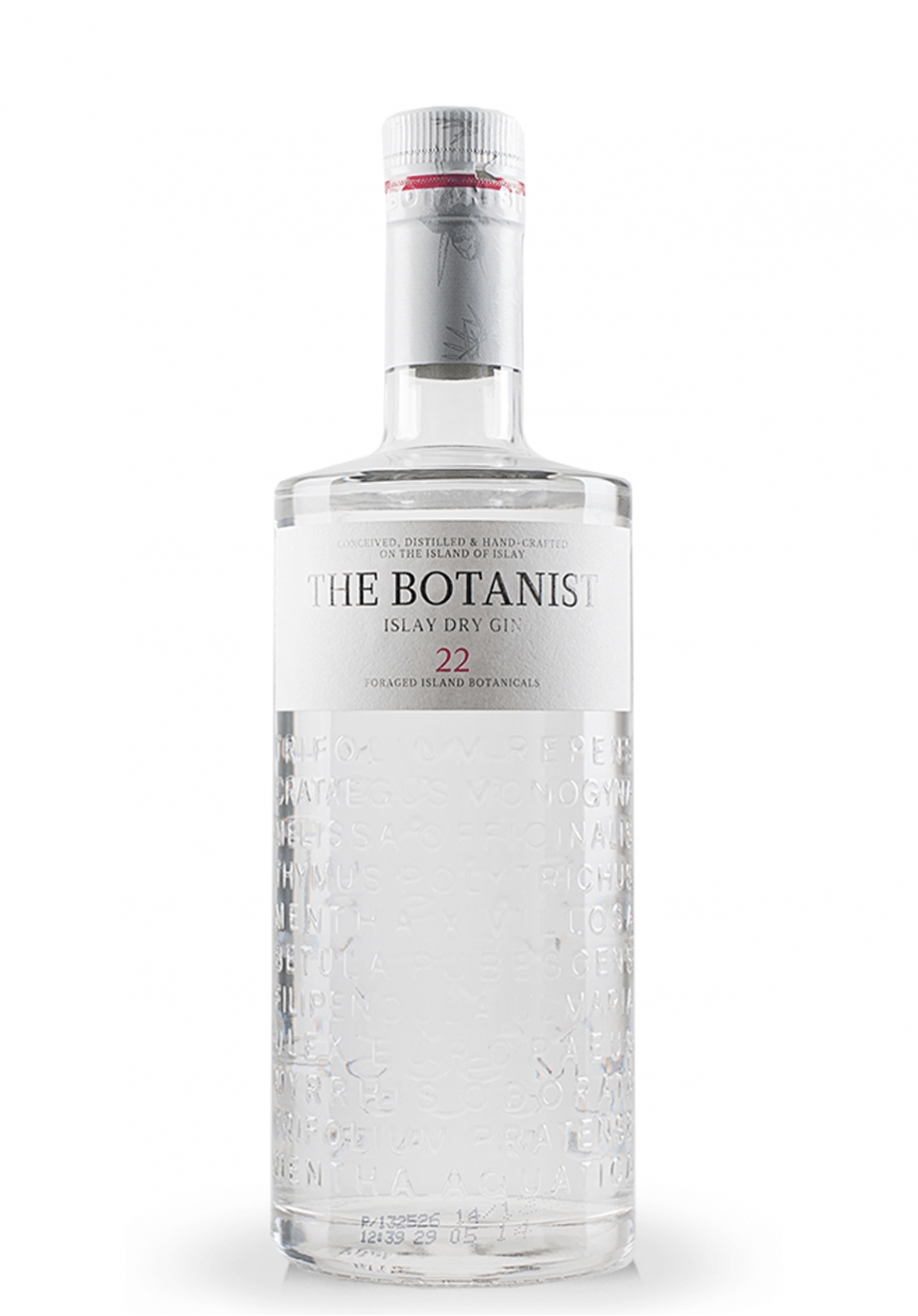
Price: $33.99
The Gin
This 46% ABV product of the Bruichladdich Distillery in Scotland, which is otherwise better known for Scotch, is reportedly made with 22 locally foraged botanicals from the isle of Islay (plus nine other ones tossed in just for fun) including one called “yellow bedstraw,” “a yellow plant that was once used as bedding and has a distinctive Tonka-Bean like aroma of fresh, creamy hay.”
Original Notes:
This one just smells like alcohol on the nose. There’s like a sweet, butterscotch thing going on on the palate though it’s fairly washed out. These are more drinkable than I was imagining but harder to differentiate. This one has a nice mouthfeel but the other notes in it seem subdued compared to the others.
It’s very nice and drinkable though.
Rating: 7.75/10
Bottom Line
I’ve had this in my bar for awhile — after Zach rated it his top gin of 2020 — and I’ve even bought it for my father (a martini drinker) as a gift. He immediately asked me where to get more. So yeah, it’s a pretty solid bottle of gin (with a very handsome bottle). I think the subtlety of it that’s normally one of its best qualities may have hurt it a little in this blind.
2. Mulholland Distilling Gin (Sample 4)
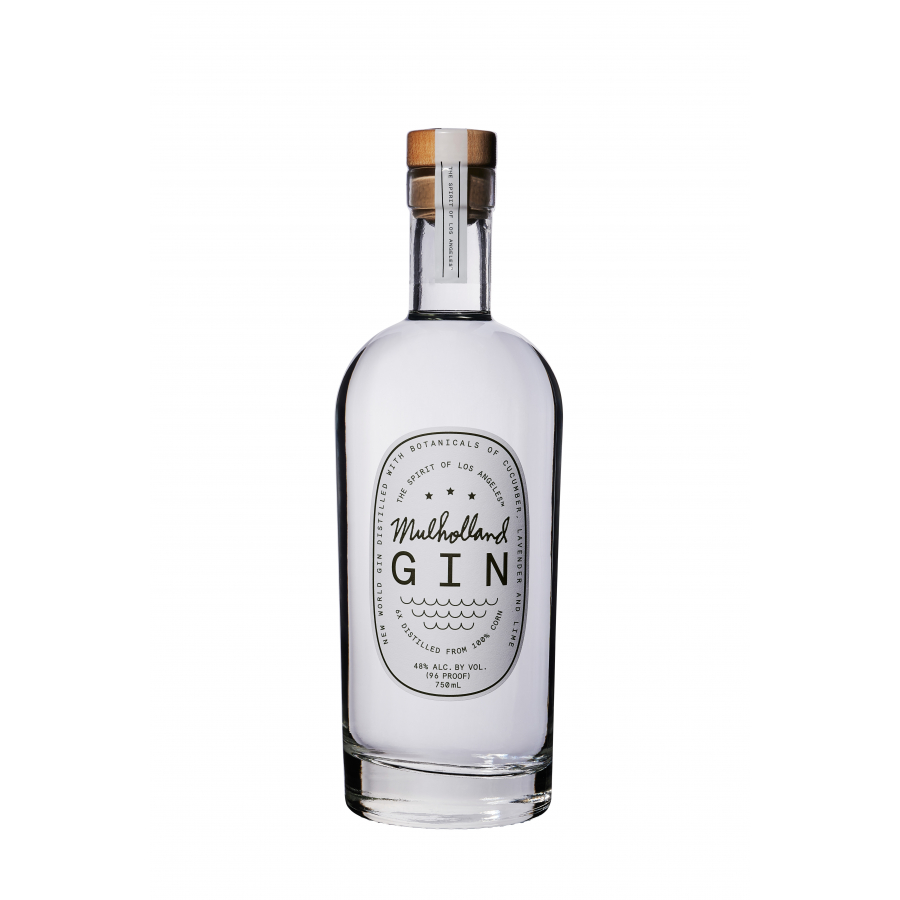
Price: $27.99
The Gin:
Finally, a celebrity gin! This product of Walton Goggins‘ Mulholland Distilling is sourced in Missouri and bottled in Ukiah, way up in Northern California. It’s distilled six times from non-GMO corn and flavored with cucumber, lavender, and lime. 48% ABV.
Original Notes:
This is very neutral smelling, like craft vodka. I get maybe just a hint of yellow corn on the nose? On the palate, yep, this definitely tastes like corn liquor, with just a hint of… cucumber, right? I’m pretty sure that’s cucumber. The cucumber is just there, not overpoweringly strong, and with a bright, clean, slightly sweet finish.
Yes, this is very nice.
Rating: 9
Bottom Line:
It was extremely close between my top two today, and it really only comes down to whether you prefer an old-school juniper-heavy gin or a more contemporary cucumber one. I do enjoy these cucumber-flavored gins a lot, and this one may have benefited from being the only cucumber-flavored option in the mix to scratch that Hendrick’s itch.
I was a bit surprised considering I was not a big fan of Mulholland’s whiskey — but perhaps that shouldn’t be too surprising considering how much longer it takes to create an aged product than a distilled-and-flavored one.
1. Glendalough Wild Botanical Gin (Sample 6)
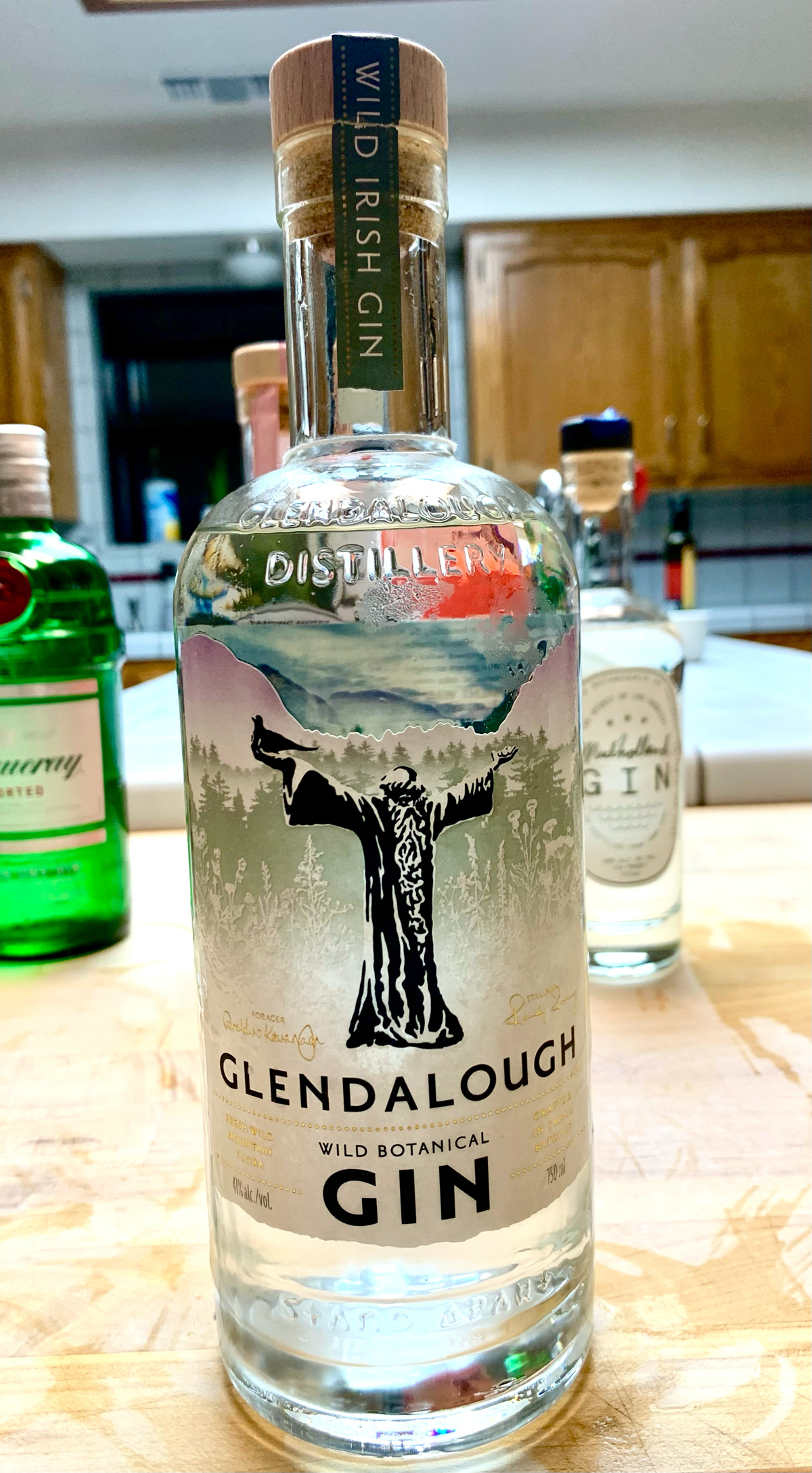
Price: $28.99
The Gin
This other product of Glendalough in Ireland is made with foraged botanicals from the Wicklow Mountains just south of Dublin, which “go fresh (not dried) into the still within hours of foraging.” It’s sort of the Ireland equivalent of The Botanist, with a host of unique, herbaceous and floral botanicals including watermint, “a weedy, hardy plant with a mint-like character that grows in damp marshes all across Europe.” 41% ABV.
Original Notes:
This one is very different. On the nose, it’s strongly herbaceous and grassy, maybe even slightly medicinal. It smells a little like chartreuse. On the palate, this one, as expected, comes on very herbaceous, but it finishes sweet with just a hint of brine. Wow, that wasn’t what I expected at all.
This one feels like a journey.
Rating: 9/10
Bottom Line
Like I said above, this really came down to whether you prefer an herbaceous, floral gin like this or the cucumber-heavy botanicals of the Mulholland. In the end, I think I chose this one simply because it was more surprising and more complex. There was just so much going on with this one and part of the surprise was that none of that complexity was offputting.







